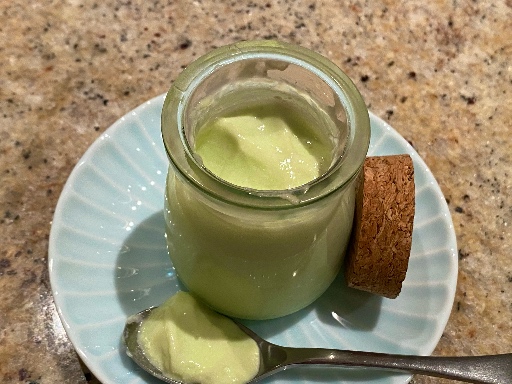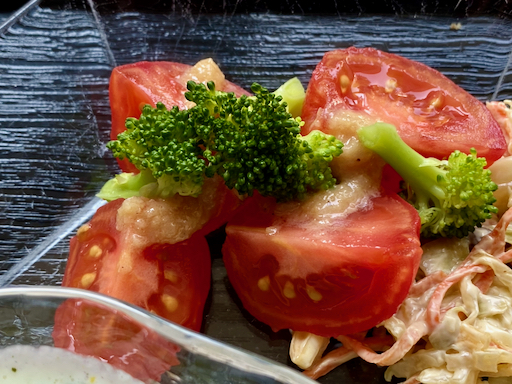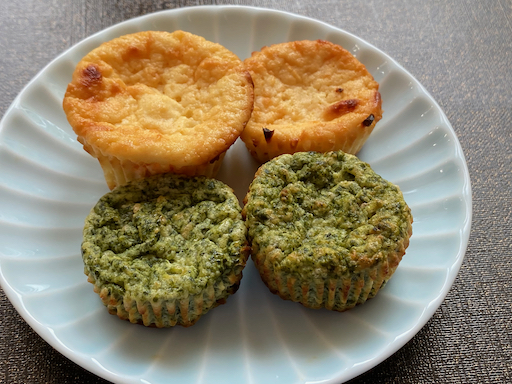My wife’s sister mentioned that recently she made a great carrot cake and apple pie. She said the recipes came from a cookbook called “Frog Commissary Cookbook” by Steven Poses which was published in 1985 (and presently out of print). While we were talking about the cookbook, I quickly searched for it and found a used one in good condition at Amazon and ordered it.
Digression alert: My wife’s sister originally lived in the Philadelphia area and was familiar with the Frog Commissary when it was in vogue back in the 1980’s. It was an exclusive catering service for the Franklin Institute which is the science museum in Philadelphia. The cookbook is based on Steven Poses former restaurant (called “Frog”) and his catering experience at the Franklin. Although we had never heard of it, back-in-the-day, the Frog Commissary Cookbook” was a “must have” in the Philadelphia area much like San Francisco a la Carte by the Junior League of San Francisco was about the same time while we were living in the San Francisco area.
As my wife and I were browsing through the book we both thought this seafood pate recipe was worthwhile to try. The recipe as shown in the cookbook is of catering proportions and large enough to serve a multitude of people. As a result it required some scaling down. In my scaled down version, however, I was not aggressive enough in the seasoning; more seasoning would have been better. Although nothing was listed as a possible sauce in the original recipe we felt it called for one. After some experimentation I came up with two sauces that worked pretty well. I served it with a side of tomato and cucumber dressed in olive oil and balsamic vinegar. In any case, it is rather good looking and subtle flavored pate.
.jpeg)
As I mentioned I thought the original recipe was sort-of a restaurant size and I reduced it by 1/4. This was not easy since the original amounts were not in metric. I first converted the non-metric weight and volume to metric and then divide those by 4. The seasoning should have been more than just 1/4 of the original recipe. (The seasoning amounts below reflect the suggested increase).
Ingredients: (makes one mini-loafpan)
Salmon-scallop mixture
85 g scallops
85 g salmon filet
1 egg white
1/8 tsp nutmeg (or to taste)
1/2 tsp. salt (or to taste)
1/4 tsp pepper (or to taste)
1/8 tsp cayenne (or to taste)
1/2 tbs (7ml) brandy
100 ml heavy cream
Spinach-scallop mixture
3 g butter
3.7ml minced shallots (half of medium shallot)
1/2 cup packed fresh spinach (30 g, cooked, moisture squeezed out, finely chopped)
1/8 tsp salt
1/16 tsp pepper
1/2 tbs minced dill
25 g scallop
15 ml heavy cream
Directions:
Salmon-scallop mixture
Cut up the salmon and scallops into a small size and place in a food processor (I used a mini-food processor) and process for 1 minute or until all chopped up
Add the seasonings, egg white and brandy and process 10 seconds
Place in a bowl and add the cream in several increments and mix until smooth.
Cover and refrigerate.
Spinach scallop mixture
Sauté the shallot in butter for 4-5 minutes (I seasoned this with salt and pepper), let it cool.
I cooked the spinach in a wok, lid on, at very low heat without any liquid (our usual way) for 7-8 minutes occasionally mixing top and bottom portions of the spinach until completely wilted and cooked. Cool, squeeze out the moisture and cut it up.
Place the shallot, spinach, and dill in a food processor and process for 10 seconds, add the chopped scallop and process additional 30 seconds or util smooth.
Transfer to a bowl and mix in the cream and mix until smooth
Assembly:
I first lightly oiled all surfaces of the loaf pan with olive oil. I lined the loaf pan with two portions of parchment paper in the shape of a cross with all sides covered (#1 picture below).
Add half of the salmon-scallop mixture, make shallow trough using the back of a wet spoon and add the spinach scallop mixture to the center in a log shape (I used a spatula and spoon to do this) (#2).
Add the remaining salmon-scallop mixture and smooth the surface.
Cover the surface with parchment paper (which I forgot but no ill effect) (#3) and then cover the loaf pan with aluminum foil (#4).
Bake in the toaster oven on convection mode at 350F using a bain marie (larger pan with hot water covering at least half of the depth of the loaf pan) for 35 minutes or internal temperature registers 135F.
Remove the aluminum foil and let it cool on the rack until reaching room temperature.
Unmold the pate by gently lifting the ends of the parchment paper lining (#5).
I placed folded paper towel on the bottom of a tight fitting sealable plastic container and refrigerated.
The cut surface is very attractive with green center (#6).
This was very elegant and very good. But I think we can improve on this. Although the color contrast is nice, we are not sure if we need the spinach in the center. Just all salmon-scallop pate could be nicer and easier to make. In terms of the sauce, we tried three sauces; aged Balsamic vinegar, wasabi soys sauce, and
yuzu-kosho ponzu. All worked well but we liked the classic wasabi-soy sauce best. The amount we made is just right for most people. I think the usual wine pairing would be a dry white or sparkling wine. We had it with our usual red.







.jpeg)
.jpeg)

.jpeg)






.jpeg)
































